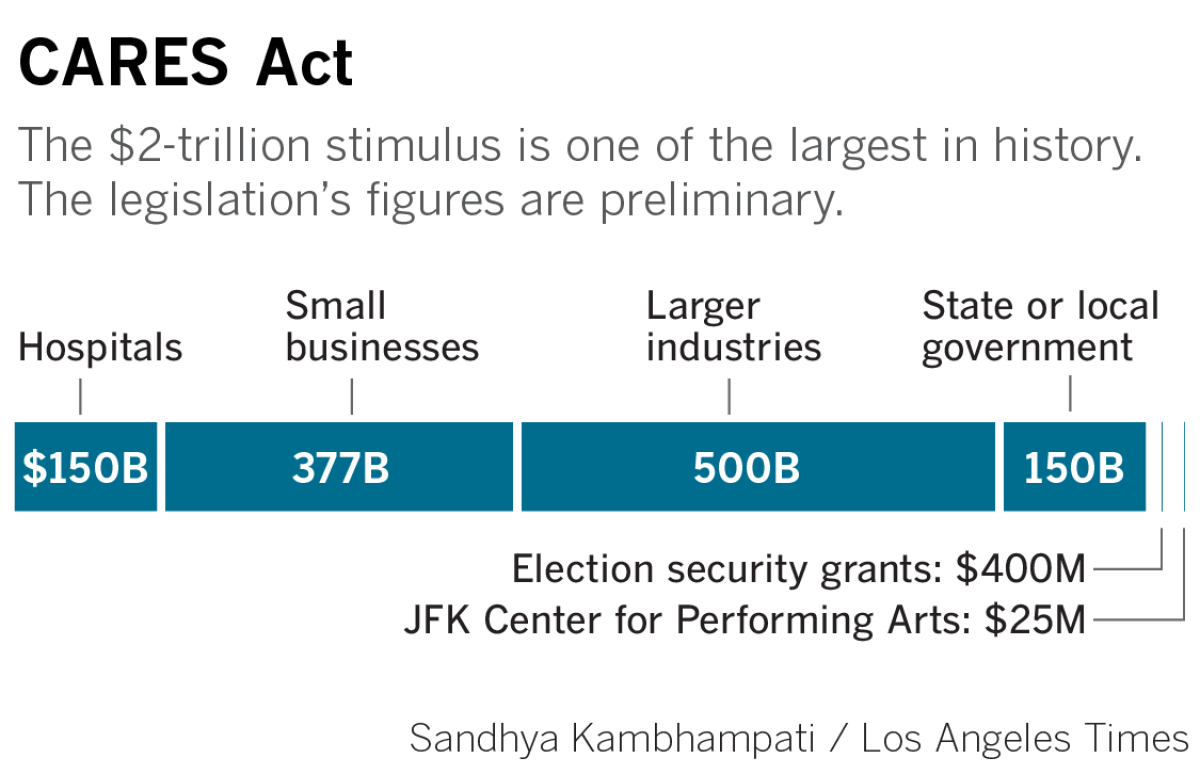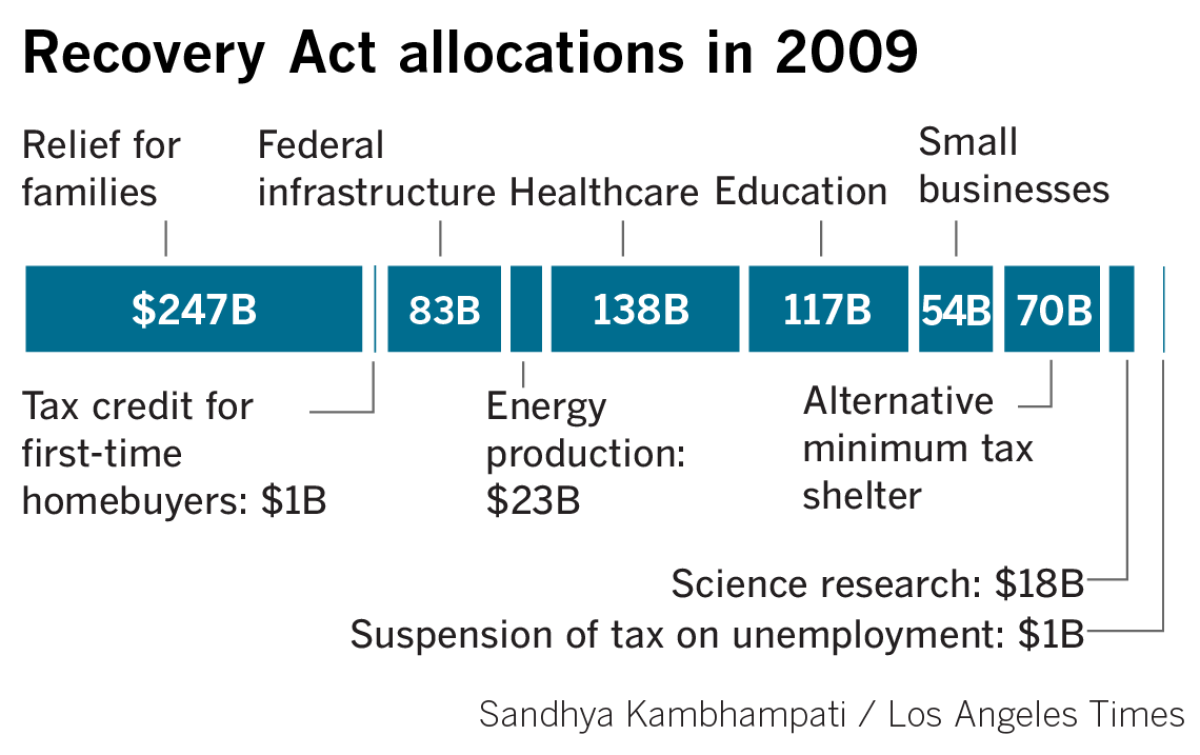The coronavirus stimulus package versus the Recovery Act
A look at how this stimulus package compares with a decade ago
- Share via
On Friday, the House is expected to give final passage to a roughly $2-trillion economic stimulus package, one of the largest in history, which includes direct payments of up to $1,200 for most adults, the expansion of unemployment insurance and loans to businesses struggling because of the coronavirus pandemic.
President Trump said Wednesday that he would sign the stimulus package, which is equivalent to nearly 10% of the nation’s gross domestic product and more than half the $3.5 trillion the federal government expects to collect in taxes this year.
Economists at the Tax Foundation estimate $300 billion will go toward recovery rebates for this year.
The last time the country passed a stimulus package was a decade ago, when President Obama faced one of the worst financial crises since the Great Depression.
“I think it’s important to note that while it is trying to help the economy, it is really intended to address the public health crisis,” said Erica D. York, an economist at the Tax Foundation. “The country needed to shut the economy down, and people are intentionally not working, unlike the previous recession.”
Here’s what we know about the Coronavirus Aid, Relief, and Economic Security Act (CARES Act):

What’s in it?
The package includes one-time payments of up to $1,200 per adult, $2,400 for married couples. People would also receive an additional $500 per child.
Individuals who made $75,000 or less, or couples who made $150,000 or less, get the maximum benefit. The amount declines for people who made more, falling to zero for individuals making $99,000 or above or married couples making $198,000 or more.
Unemployment benefits would also expand, to boost the maximum benefit by $600 per week for four months. Eligibility would extend to independent contractors and the self-employed.
Payments go out as soon as early April. The income thresholds are based on the amount people reported on their tax forms for 2018 or 2019, if already filed.
The package also includes the creation of an oversight board and inspector general to oversee loans to large companies and a measure prohibiting companies owned by Trump and his family from receiving federal relief.
The income thresholds are the same as those of the stimulus packages a decade ago, but the amounts given out in 2008 were smaller than today’s.
Here’s a look at stimulus packages a decade ago and how they differ from the one today:
American Recovery and Reinvestment Act, 2009
How much? $831 billion
Signed: Feb. 17, 2009
Congress passed the Recovery Act to end the 2008 recession. A one-time payment of $250 went to recipients of Social Security, Supplemental Security Income, railroad retirees and veterans, totaling 52 million beneficiaries.
What was it?
Not everyone got checks. Most taxpayers received tax rebates through a program called the Making Work Pay program.
This rebate showed up as a reduction in tax withholding — a 6.2% tax credit, for a maximum credit of $800 for joint filers and $400 for individuals. Credits began to phase out for individuals making over $75,000 or $150,000 for couples, and the credit went away for people earning $95,000 or more for individuals and $190,000 for couples.
Along with stimulus checks, the Recovery Act allocated money to immediate relief for families, businesses and the economy.

Economic Stimulus Act, 2008
How much: $168 billion
Signed: Feb. 13, 2008
Prior to the Recovery Act, the George W. Bush administration sent $120 billion in stimulus checks to more than 120 million households to tackle the 2008 recession.
What was it?
The rebates applied to the first $6,000 of taxable income for individuals or the first $12,000 for married couples. Twenty-million retirees on social security and disabled veterans received checks of $300 if they were taxpayers and earning at least $3,000 of income, along with other requirements.
Unlike the current proposed legislation, the stimulus checks were smaller, with individuals receiving $600, dependents receiving $300 and married couples receiving $1,200. The rebate was reduced for those at higher incomes: $75,000 for individuals and $150,000 for married couples.
More to Read
Get the L.A. Times Politics newsletter
Deeply reported insights into legislation, politics and policy from Sacramento, Washington and beyond. In your inbox twice per week.
You may occasionally receive promotional content from the Los Angeles Times.











